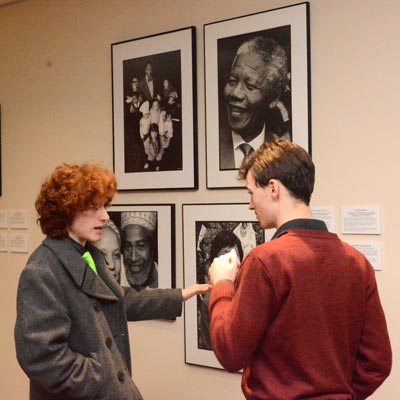Objectives and Learning Goals

Objectives

The undergraduate minor in Creativity, the Arts, and Social Transformation (CAST) offers a coherent academic sequence through which students can explore theory and practice at the nexus of the arts (e.g., music, literature, theater, visual arts, storytelling, digital art and broadcast media, architecture, conceptual art and folk expressions of all kinds), creativity and social change.
The minor challenges students to engage in, and reflect on, various modes of knowledge creation, including aesthetic, interpretive and analytical, as well as different modes of presentation, including creative, written, oral and performative. CAST introduces students to a range of creative social change practices and the theories of change that are implicit in them, and encourages them to grapple with the ethical dilemmas inherent in the field.
The minor supports students to imagine careers and vocations that link their talents and interests in the creative arts and social change with the needs of communities and issues of social justice. Students will learn how artists, cultural workers and other change agents support communities to cultivate, restore and strengthen the capacities required to live creatively, sustainably, non-violently and ethically.
Learning Goals
The CAST minor will create a community of inquiry in which students and faculty members explore theories and practices at the nexus of the arts and cultural work, justice-seeking and peacebuilding, and creativity. Students will be introduced to a range of theories of change that link creative engagement with strategic thinking; acquire skills to think critically about artistic and cultural interventions; and begin to develop capacities to design, assess, enact, document and/or facilitate creative projects that contribute to more just and less violent communities.
Knowledge
CAST offers students an overview of recent interdisciplinary thinking about the nature of creativity and the conditions that give rise to it. Students will explore how movements for economic, racial, gender and environmental justice as well as initiatives to transform violent conflict have incorporated the arts and cultural work, both in the United States and globally. Students also will consider the range of contributions of the various art forms (music, theater, dance, literature, poetry, visual arts, film, etc.) and cultural institutions (museums, theater ensembles, festivals, radio stations, etc.) to more just, more resilient and less violent communities throughout the world. They will engage in, and reflect on, various modes of learning, including aesthetic and analytical.
Skills and Capacities
Students will learn to:
- Identify theories of change implicit in social movements and in creative practices.
- Think critically about the possibilities and limitations of various artistic and cultural approaches to social transformation.
- Analyze case studies of arts-based and culturally informed social change initiatives, articulating the relationship between aesthetic quality and socio-political efficacy, risks of doing harm, and other issues of ethics and efficacy.
Students will begin to develop capacities required to design, assess, enact, document and facilitate creative projects that contribute to more just and less violent communities. In addition to whatever artistic talents students may bring or cultivate through coursework, these include capacities to:
- Inquire with multiple disciplinary frames of reference and multiple modes of knowledge-seeking and meaning-making.
- Collaborate with teams of people from diverse backgrounds and disciplines.
- Become aware of oneself as a listener and listen with qualities of presence that elicit difficult-to-tell stories.
- Identify sources of resilience.
- Combine analytic insights with creative acts.
- Cultivate one’s own and others’ creativity.
Social Justice
Students will consider social justice within the larger frame of "social transformation" including theories and practices from peacebuilding, development, restorative justice, non-violent social change, reconciliation, etc. Within the minor, students will:
- Learn about, witness the works of and engage with courageous and creative leaders of social transformation initiatives as well as socially engaged artists whose works explore themes of social transformation and inspire action toward social justice.
- Explore the relationship between aesthetic excellence and socio-political efficacy. Students will be offered opportunities to express their own commitments to social justice in creative ways.
Rigor
Students enrolled in the minor will be expected to engage in a multifaceted but coherent inquiry in a rigorous fashion. As outlined below, the content of the introductory course, the distribution of the electives, and the capstone practicum, taken together, embody our understanding of rigor for an undergraduate minor in this field. Students should demonstrate:
- Awareness of, and increasing capacities to act in accordance with, the ethical sensibilities required to engage communities in creative processes, including an understanding of ways to minimize risks of harm and awareness of one’s self and social positions in relation to the dynamics of the context.
- The ability to bring into relationship aesthetic, analytic and strategic modes of knowledge-production with different modes of presentation, including creative, written, oral, performative, etc.
- The ability to link theory with creative practice.
- Knowledge of historical and culturally diverse perspectives on the public and communal functions of the arts and cultural production, including on how artists (of all genres) and cultural workers have engaged communities and contributed to social, economic, environmental and restorative justice, and to the creative transformation of conflict.